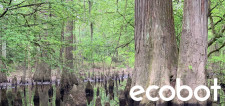
ASHEVILLE, N.C., June 15, 2023 (Newswire.com) - Ecobot, the platform driving the digitization of mandatory pre-construction environmental assessments, today launched an interactive ArcGIS StoryMap to help environmental consultants and citizens understand how the recent Sackett v. EPA ruling by the Supreme Court of the United States (SCOTUS) will play out across the country based on existing local, state, and federal regulations.
The StoryMap uses wetland datasets from the U.S. Fish and Wildlife Service (USWS), overlaid with locations of active permits and jurisdictional determination (JD) applications in review by the U.S. Army Corps of Engineers. Another layer indicates the stringency of municipal and state wetland regulations.
"What's been missing from the outpouring of media coverage about this is a resource for understanding how the decision may affect different areas based on a number of regulatory variables," says Chris Fleming, Senior Solutions Engineer at Ecobot, who designed the StoryMap.
At a high level, here's how the decision stands to affect environmental consultants, regulated communities, and average citizens, respectively:
- Environmental consultants face uncertainty in the JD process until USACE/EPA guidance develops. Meanwhile, the delineation process proceeds as normal, with an increased need to thoroughly document landscape position and surface connectivity for delineated wetlands. Consultants must understand state or local regulations.
- Regulated communities, e.g. Residential, Commercial, and Infrastructure, now face uncertainty regarding project timelines and permitting, and even previously issued jurisdictional determinations may be in question. There may be a reduction in impacts to jurisdictional resources (e.g., wetlands, ephemeral streams) and in compensatory mitigation requirements. There may be an increase in rigorous state and local regulations to counter the new limitations on federal jurisdiction.
- Citizens may see increases in residential and commercial developments, including greater home and commercial inventories, more job opportunities, and revenue generation from taxes and impact fees. Meanwhile, there may be losses to wetland function, including weakened flood control, disturbances to fish and wildlife habitats, and impacts to water quality, supply, and recreation.
Ecobot and affiliates have long advocated for better methods of documenting wetland status and loss. Currently data is collected only at coarse scale, with decades of information lost due to lack of modernization.
"Strategic planning and coordination are required to reverse long-standing wetland loss trends within the U.S.," said Megan Lang, Chief Scientist at USFWS, who contributed to the StoryMap.
Ecobot is designed to increase efficiency and help scientists be more effective, with rapid field data collection and reporting, a standardized digital scheme with Esri integration for geospatial analyses, and tools to understand relative wetland quality via floristic analyses.
About Ecobot
Ecobot is a cloud-based platform that supports efficiency by optimizing data collection and management for environmental permits, and enables customers to utilize data in a variety of contexts. Ecobot helps customers deliver data consistency across a distributed workforce, and enables them to leverage field data for improvements to the construction lifecycle. See how Ecobot can transform your pre-construction permitting workflow at ecobot.com.
Source: Ecobot, Inc.
Share:
